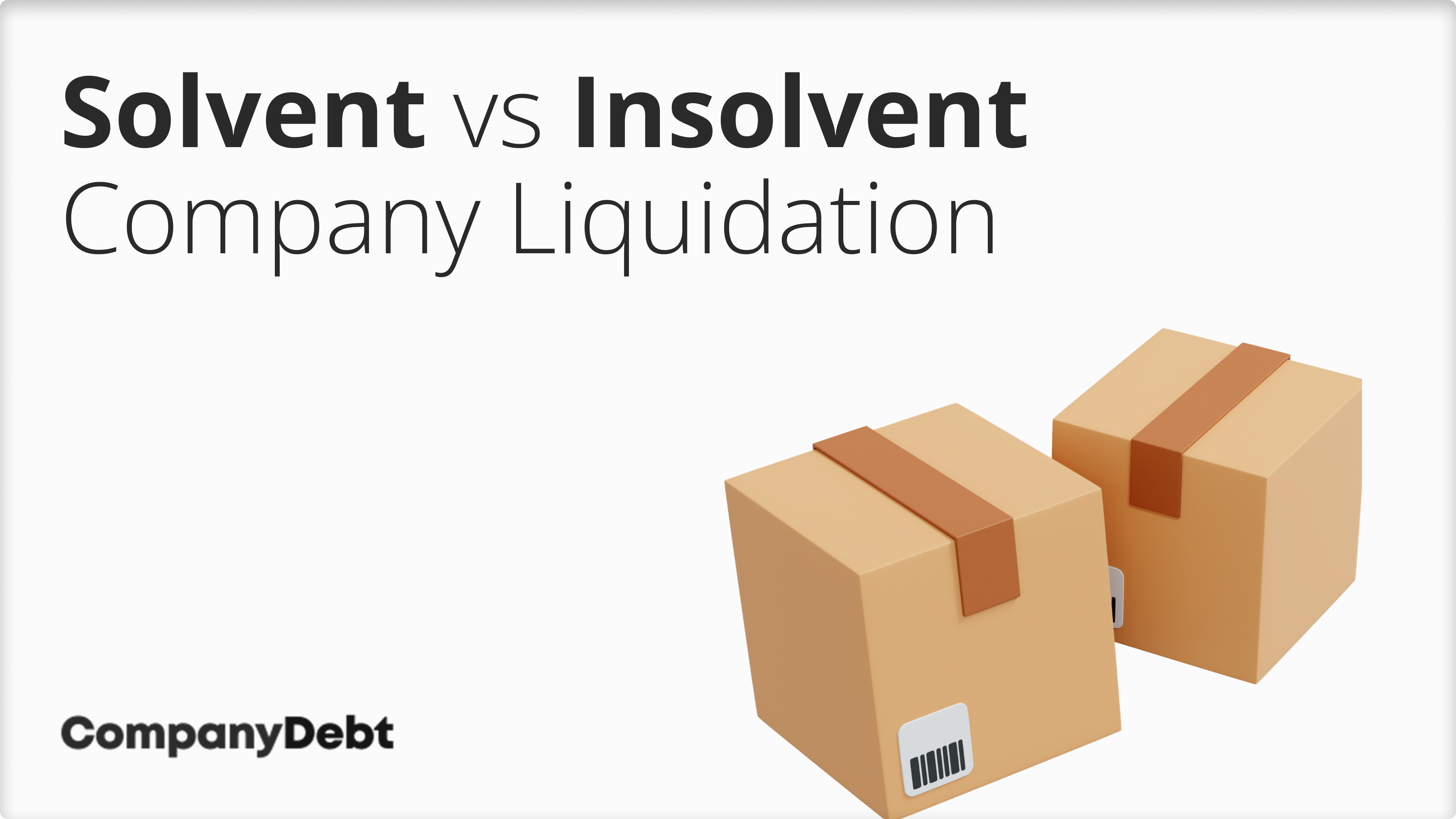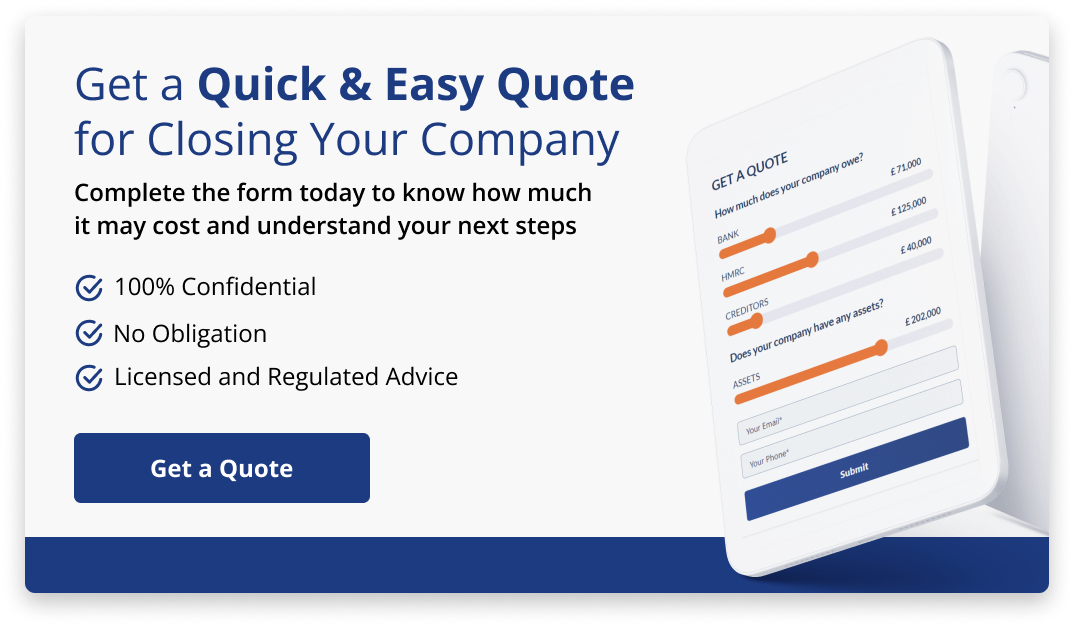
Solvent vs Insolvent Company Liquidation
Solvent and insolvent liquidation are two different types of liquidation: a process of closing a limited company.
Solvent liquidation, also known as a members’ voluntary liquidation, occurs when a company is financially stable but wishes to close efficiently. Insolvent liquidation, on the other hand, is when a company cannot pay its debts and is forced to sell off its assets to pay off its creditors.
This article will explore the key differences between solvent and insolvent liquidation, including the causes, the process, and the impact on the company and its stakeholders. We will also look at the similarities between the two types of liquidation and the options available to directors.

What is Solvent Liquidation?
Solvent liquidation (members’ voluntary liquidation) is the process of closing a financially stable company that can pay off all its debts. It is typically initiated by directors seeing a tax-efficient means of closing a business with assets above £25,000.
The process of solvent liquidation is relatively straightforward. The company’s shareholders will vote to dissolve the company and appoint a liquidator. The liquidator’s role is to collect and realize the company’s assets, and distribute any proceeds among the shareholders.
The impact of solvent liquidation on stakeholders is generally minimal. In most cases, the company has reached the end of its natural life, and the director uses the MVL as an exit strategy, perhaps before retirement.
What is Insolvent Liquidation?
Insolvent liquidation is the process of closing a company that cannot pay its debts. A creditor typically initiates this type of liquidation through a petition to the court. The court will then appoint a liquidator to oversee the process.
The process can also be chosen voluntarily by directors once the company has crossed a tipping point and is no longer viable; this is called a creditor’s voluntary liquidation.
The causes of insolvent liquidation can vary, but it is often the result of financial difficulties such as poor management, economic downturns, or fraud.
It’s important to note that the company’s directors can be held liable for its debts if they are found to have traded while the company is insolvent.
The insolvent liquidation process is more complex than solvent liquidation as the liquidator’s main role is to investigate the company’s affairs, realise its assets, and distribute the proceeds among the creditors.
The liquidator is also responsible for ensuring that the process is carried out in accordance with the law and that the creditors’ rights are protected.

What are the Differences Between Solvent and Insolvent Liquidation
Some of the main differences between solvent and insolvent liquidations are :
- Insolvent liquidations prioritise safeguarding creditors’ interests, whereas solvent liquidations prioritize shareholders’ interests.
- With solvent liquidations, the business owners retain some influence on the process. In an insolvency situation, the directors and shareholders must step aside completely,, and there will be an investigation by the appointed Insolvency Practitioner as to whether the company has been lawfully run in financial terms in the period leading up to liquidation.
- Insolvent liquidations of limited companies may trigger personal liabilities for the directors and/or shareholders if they have given personal guarantees for company borrowings or where the directors have acted unlawfully.
- The process, timing and costs associated with solvent liquidations are completely different from insolvent liquidations.
We are specialists in all types of company liquidations. We have a team of advisors to help small business clients decide on what is the best available option, and we also have experienced licensed Insolvency Practitioners to deal with liquidations.
Summary
In summary, solvent and insolvent liquidation are two different types of ways to close a limited company. Solvent liquidation occurs when a company is financially stable, whereas. insolvent liquidation occurs when a company is unable to pay its debts.
The process of solvent liquidation is relatively straightforward while the process of insolvent liquidation is more complex and the legal requirements are stricter. The impact on stakeholders is also different in both cases, in solvent liquidation the company’s creditors and employees will be paid off in full and the shareholders will receive a distribution of the remaining assets, while in insolvent liquidation the company’s creditors and employees will not always be paid in full, and the shareholders are unlikely to receive any money back.
Or, you can read our specific pages about each subject:
Do You Want to Voluntarily Liquidate an Insolvent Company?
Do You Want to Liquidate a Solvent Company?
Whether your company is profitable, or you have reached the point of insolvency, our team of licensed experts is here to help you make the best of our situation. Please call us, or use the live chat for a free consultation.










